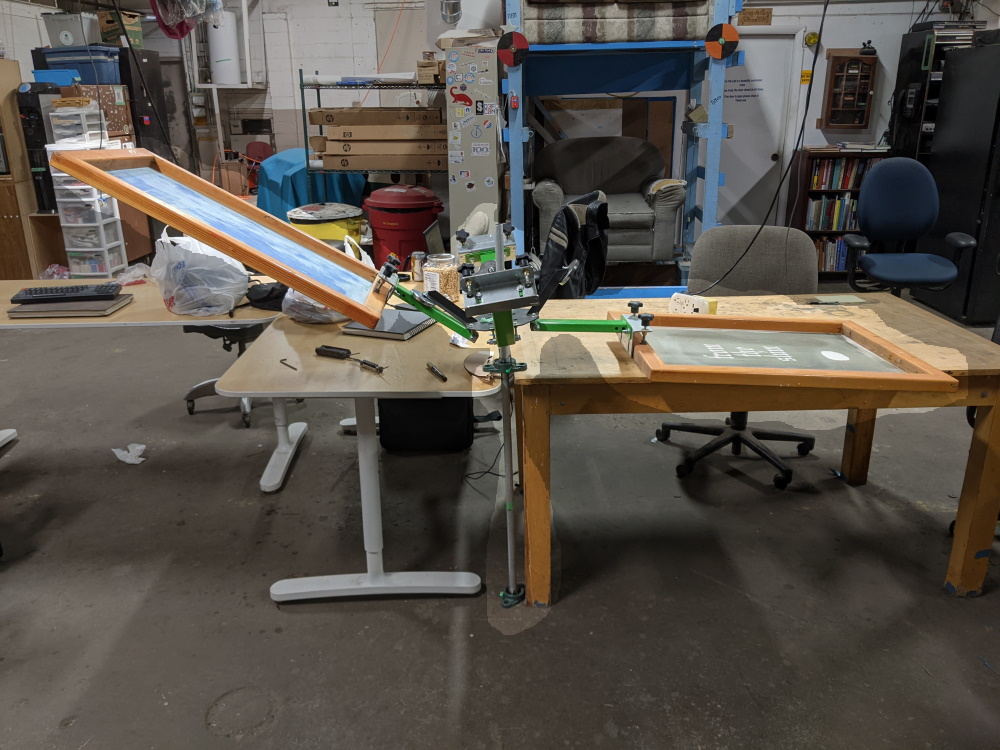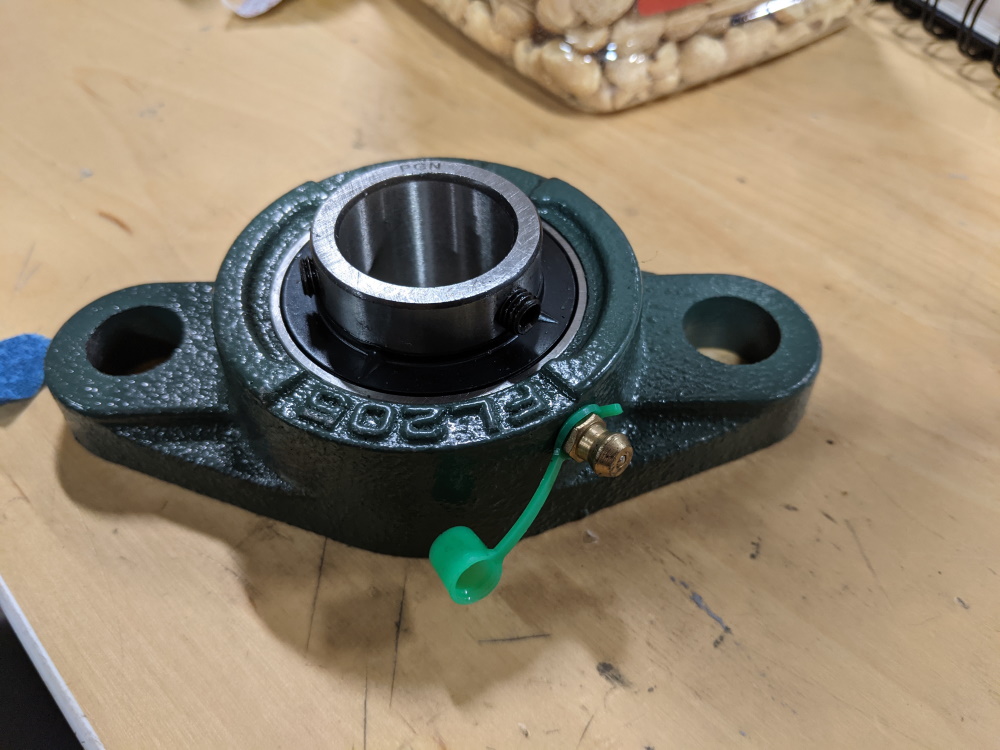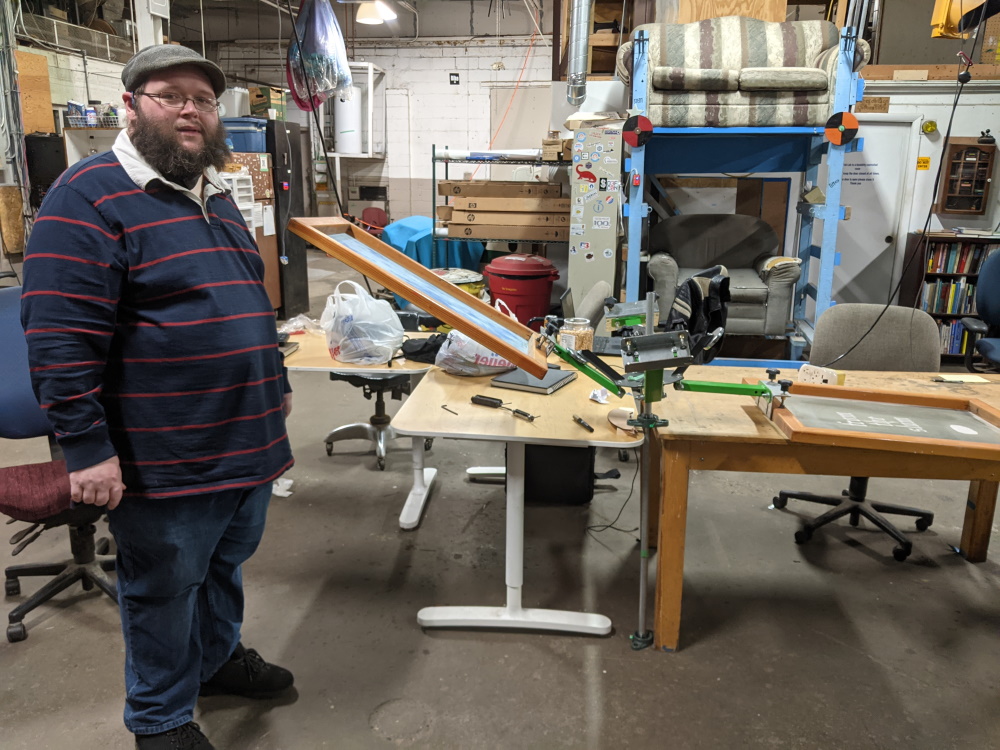Craft Room TODO: Build Stand for 4-Arm Screen Printer
We've received part of a 4-arm screen printer; we need a stand to make it useful.
In the following photograph: The four arms and the screens are original. The shaft running through it is not.
The next photo more-or-less shows how the device is used, kind of. Each mounted screen holds a different mask for an up-to-four-color image. The user puts down media on the table, rotates a mask into position, and applies ink with a squeegee, then repeats to apply up to three more layers before removing the media.
We don't have any part of the original except the four-arm bit. We need:
- A cart
- into one end of which a shaft can be mounted
- and onto the other end of which screens can be successively pulled down to print.
- Said cart MUST be able to be mounted on high-quality locking casters, so that the whole thing can be parked by a wall when not in use.
Notes:
- Bearings: We've already procured a pair of the following bearings. They tighten with a hex key in two holes (size seems to be around 9/64"). The 4-arm thing has only one tightening screw (5/32"?)
- Shaft width: Both the bearings and the 4-arm thingy have a shaft width infinitesimally under 1". Currently, a smaller pipe is fixed in for demo, but it makes it rotate rather off center.
- I don't yet have the castors, but will be looking for some.
- About shaft torque: The screens mounted in the photos are our largest size, 23" x 31" (or a little larger). As can be seen in the two photos at the end, when mounted, they quite change the torque on the shaft, which needs to be considered so that the cart isn't prone to shaking or wobbling during use. Such a thing could potentially ruin prints.
- Ideally, the cart will be rock-stable even when all four screens are in use in their long (portrait) orientation and the user is spinning the arms. Note that we can only fit on two of the large screens in landscape orientation; an overlarge footprint that allows either orientation is far preferable to a design engineered for landscape only.
- Lower shelf: As with the printing press, a lower shelf for storage is very desirable. Not only does it let us store most to all of the supplies onboard - it also lets us use them to change the center of gravity to a lower, more stable point. Certainly, having a lead-filled type case on the lower shelf of the cart press has proven to improve the user experience during operation.
- Cleanable surface: It's far preferable that the top surface on which the screen rests be hard to scratch and easy to clean, or at least easy to replace. It cannot be prone to snagging the screen silk, lest we tear a screen; none of us here have the expertise to stretch new screens.
- There needs to be a depression in the top surface to accommodate the 'claws' into which the screen is screwed. Otherwise, screens won't mate flat when the arm is pulled down.
Nice-to-haves:
- Some way to consistently register screens to exactly the same location, mechanically. One possibility is to mount blocks on either side of the arm. When the arm is pulled down, the blocks guide it into exactly the same place every time; when the arm is raised and locked to the magnet which holds it in place, it clears the blocks and the next arm can be rotated into place.
- Triangular shims, or a better arm mating solution. As can be seen below, the original design had a ...curious attitude to how flat the magnets needed to mate with the arm; I've only been able to get them to mate by loosening the nut until the magnet can essentially rotate to match the arm angle. Triangular shims would help stabilize this 'fix', and it may also be possibly to change the hardware attaching the arms to the center (not shown)




